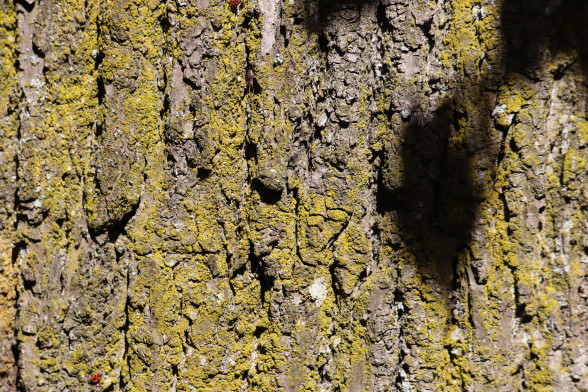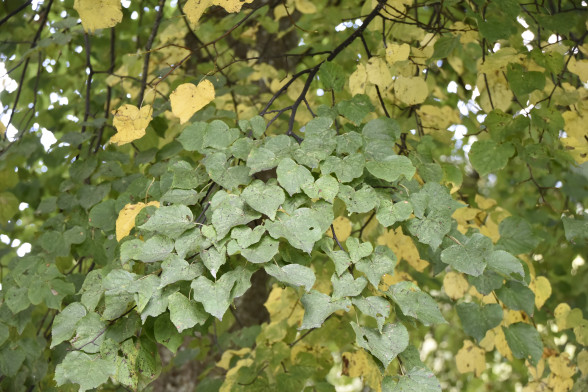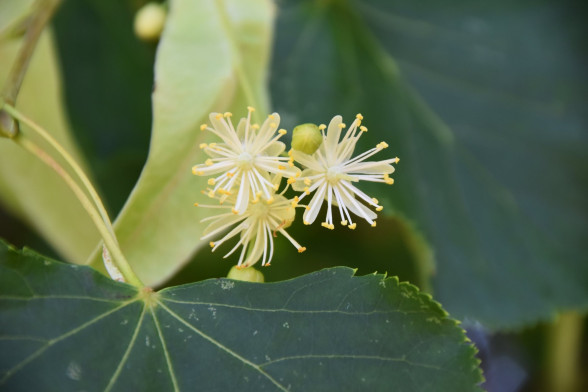
Small-Leaved Lime /Tilia cordata/
Small-leaved lime is a deciduous tree of the mallow family, reaching up to 30 m in height, with a broad crown. Young trees have smooth bark, later becoming fissured. Young shoots are reddish or olive-green. The leaves are simple, with a stalk and a more or less asymmetrical heart-shaped base. The lower side of the leaves is bluish-green, with tufts of rust-colored hairs in the vein angles. The flowers are pale yellow and fragrant. The bract of the inflorescence usually does not reach the sharp base. It blooms in June and July.
Small-leaved lime trees thrive in forests, along riverbanks, and on lake islands. They are also cultivated along roadsides and near populated areas. It serves as a good nectar plant.
Interesting and important facts
From dried small-leaved lime flowers, infusions and teas are prepared, used as a diaphoretic remedy for treating upper respiratory tract inflammation and colds.
Ancient Latvians crafted children's cradles and zithers from lime trees, carved spoons, ladles, bowls, pestles, and lids, constructed tables, chairs, clothes beaters, and mill paddles. They wove baskets, tubs, buckets, ropes, and even whisks from lime bast. The soft wood of the small-leaved lime is unsuitable for firewood and construction but is valued for enhancing the beauty of avenues, parks, and house gates. In urban areas, limes purify the air, tolerating pollution better than other trees. Lime groves can retain up to 80% of dust particles. A single large lime tree produces around 2500 m3 of oxygen in summer.
Information sources: https://www.latvijasdaba.lv, Wikipedia, radioswhgold.lv
Photo: pixabay.com


